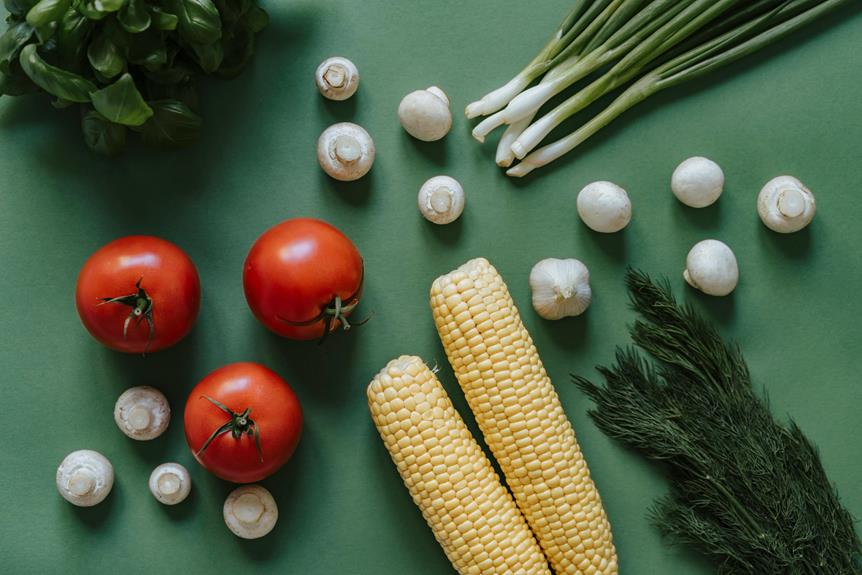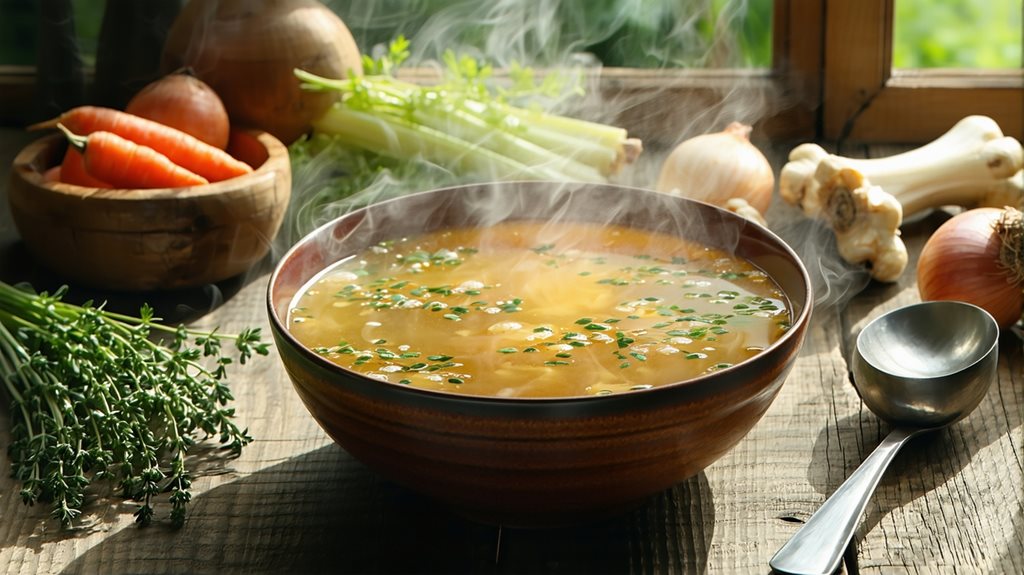When you're looking to prune dill in your Aerogarden, it's important to start by spotting the main stem, which is your guide for making precise cuts. You'll want to use sharp, clean scissors to trim any overgrown side branches, aiming to cut just above a leaf node to encourage bushier growth. It's also important to remove any yellow or dead leaves to prevent any potential disease from spreading. But, what happens after this initial pruning? Proper post-pruning care can greatly impact your dill's health and productivity, and there are a few key steps you shouldn't overlook.
Key Takeaways
- Start pruning dill when it reaches 4-6 inches tall to encourage bushier growth.
- Use clean, sharp scissors or pruning shears, sterilized with rubbing alcohol.
- Trim the oldest and tallest stems first, cutting above leaf nodes to promote branching.
- Remove any yellowing or damaged leaves to maintain plant health and airflow.
- After pruning, check and adjust the water and nutrient levels in your AeroGarden.
Understanding Dill Growth Cycles
Dill typically completes its lifecycle in one season, sprouting, flowering, and seeding within a few months. You need to understand this swift growth to manage your Aerogarden effectively. As dill progresses, each phase demands different care tactics, which you'll master to keep your plants thriving.
Initially, dill seeds germinate quickly. Within two weeks, you'll see sprouts. This is your cue to make sure the Aerogarden's settings are ideal. Dill loves light; it thrives under 12 to 16 hours of daily exposure. Don't let the soil get too dry; consistent moisture is important, yet overwatering is your enemy.
As the plant matures, it will enter a rapid growth stage. Here, dill gets tall and leggy, often stretching towards the light source. You must adjust the light height regularly to accommodate this growth while maintaining the intensity. This control prevents your dill from becoming weak and floppy, which can happen if it's straining to reach the light.
Understanding these growth stages empowers you to create the perfect conditions for your dill. By adjusting and monitoring, you secure not only survival but robust health and flavor, making your culinary efforts more rewarding.
Signs Your Dill Needs Pruning
You'll know it's time to prune your dill when you observe that the stems have become crowded and the plant starts looking bushy. This is your cue to take action to maintain the health and productivity of your dill. Overcrowding can lead to inadequate airflow and reduced light exposure, which may stifle growth and promote disease.
You'll also notice that the lower leaves might start yellowing, a sign they're not getting enough light due to the denser foliage above.
If your dill has tall, leggy stems, it's another indicator that pruning is necessary. These leggy stems are often weaker and can affect the overall stability and aesthetic of your plant.
Additionally, if flowering begins, it's essential to prune promptly. Flowering can divert energy away from leaf production, which is especially important if you're cultivating dill primarily for its leaves.
Tools Required for Pruning
To properly prune your dill in the Aerogarden, you'll need a few essential tools. These aren't just any tools; they're specific to guaranteeing precision and control, allowing you to master the growth and shape of your dill. By using the right tools, you'll maintain the health and productivity of your plants, making sure they thrive under your care.
Here are the key tools you'll need:
- Sharp Scissors or Pruning Shears: Opt for ones designed for delicate plant work. Sharp blades ensure clean cuts that heal quickly, preventing damage to your dill.
- Tweezers: These are perfect for removing small or dead leaves that are hard to reach with scissors. This precision tool helps you avoid disturbing nearby healthy stems.
- Gloves: Lightweight gardening gloves can protect your hands from irritation and keep the plant oils off your skin. They also provide a better grip on your tools.
- Cleaning Alcohol: Before and after pruning, wipe your tools with cleaning alcohol. This prevents the spread of any potential diseases between plants.
Using these tools, you'll have complete control over the pruning process, ensuring your dill remains healthy and vigorous in your Aerogarden.
Techniques for Effective Pruning
Begin pruning your dill by trimming the oldest and tallest stems first to promote new growth and maintain plant health. This strategic approach allows you to shape the plant to your liking while enhancing its vitality. Focus on cutting just above a leaf node or junction where two branches meet. This method encourages branching, which can lead to a fuller plant.
Next, you'll want to thin out dense areas to improve air circulation. This step is important as good airflow helps prevent disease and supports even growth. Identify any stems that are crossing over others or growing inward towards the center of the plant. By removing these, you make sure that all parts of your dill receive equal light and space, which is essential for balanced development.
Lastly, regularly snip off the tips of the newer, outer stems. This practice, known as tipping, not only keeps your dill manageable but also encourages it to become bushier. Each cut you make stimulates the plant to produce multiple offshoots, giving you more control over its shape and size.
Through these precise techniques, you'll maintain a healthy, productive dill plant in your Aerogarden.
Managing Overgrown Dill Plants
When your dill plant becomes overgrown, it's important to tackle the issue promptly to maintain its health and productivity. Overgrowth can lead to poor air circulation and reduced exposure to light, greatly hindering the plant's performance.
Here's a straightforward approach to regain control:
- Identify the Main Stems: Locate the central stems of your dill plant. These are typically thicker and older than others. Focusing on these will help you understand the plant's natural structure and decide where to cut.
- Cut Back to a Node: Nodes are points on the stem where leaves grow. Trim the overgrown stems just above these nodes. This encourages the dill to branch out and grow more densely rather than just tall and spindly.
- Thin Out Dense Areas: If some parts of your dill are excessively dense, carefully thin these areas. Removing some stems entirely right at the base helps improve airflow and light penetration throughout the plant.
- Regular Maintenance: Don't wait for overgrowth to become a problem. Regularly prune your dill to keep it manageable. This not only maintains its shape but also enhances its overall health.
Post-Pruning Dill Care
After pruning your dill, it's important to provide the right care to promote healthy regrowth. First, make sure that your Aerogarden's water level is ideal. Dill roots need a consistent supply of water, but not so much that they become waterlogged. Check the system's water indicator and refill as needed to maintain the perfect level.
Next, monitor the nutrient solution closely. After trimming, your dill will require sufficient nutrients to recover and grow robustly. Add the recommended dose of Aerogarden nutrients immediately after pruning, and then follow the regular feeding schedule as guided by your Aerogarden manual. This precision in nutrient management will have a significant impact on your dill's health.
Adjust the light settings if needed. Dill thrives under full spectrum LED lights in the Aerogarden system, but after pruning, it may benefit from a slight reduction in light intensity or duration to reduce stress on the trimmed plants. Gradually increase back to full light exposure over the next few days as your dill begins to show signs of new growth.
Tips for Continuous Harvesting
To maintain a steady supply of dill from your Aerogarden, it's important to harvest regularly. You've got to take charge and make sure you're cutting the right amount at the right time to keep your dill thriving and productive. Here's how you can master the art of continuous harvesting:
- Harvest Early and Often: Begin harvesting when your dill plants are about 4 to 6 inches tall. Don't wait too long; younger dill leaves are more tender and flavorful. Regular cutting encourages fuller, bushier growth.
- Cut the Right Amount: Remove no more than one-third of the growth at any one time. This method avoids stressing the plant too much, allowing it to recover quickly and continue growing.
- Use Clean Techniques: Always use sharp, clean scissors or pruning shears to make your cuts. This prevents damage and potential disease from affecting your plants.
- Monitor Plant Health: After each harvest, take a moment to check your plants for any signs of stress or disease. Healthy plants rebound more quickly and yield more extensively.





Konnichiwa! (Hello!) I'm Pat Tokuyama, a Japanese tofu cookbook author, who travels for music, food, and adventure. If you like Japanese tea, checkout some of the newestorganic japanese tea, matcha bowls and noren and more!
** Curious about the Plant Based Japanese Cooking Club? ** Learn more here!